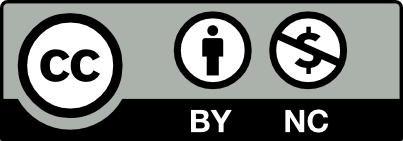Checking for non-preferred file/folder path names (may take a long time depending on the number of files/folders) ...
This resource contains some files/folders that have non-preferred characters in their name. Show non-conforming files/folders.
This resource contains content types with files that need to be updated to match with metadata changes. Show content type files that need updating.
Data from Doughty et al. (2020), Electrical imaging of tracer tests and hyporheic exchange from logjams
| Authors: |
|
|
|---|---|---|
| Owners: |
|
This resource does not have an owner who is an active HydroShare user. Contact CUAHSI (help@cuahsi.org) for information on this resource. |
| Type: | Resource | |
| Storage: | The size of this resource is 847.9 MB | |
| Created: | Dec 04, 2019 at 2:10 a.m. | |
| Last updated: | Feb 05, 2024 at 8:09 a.m. | |
| DOI: | 10.4211/hs.e12778e5718b414ab530381e89bf24ed | |
| Citation: | See how to cite this resource |
| Sharing Status: | Published |
|---|---|
| Views: | 7290 |
| Downloads: | 32 |
| +1 Votes: | Be the first one to this. |
| Comments: | 1 comment |
Abstract
Data from Doughty, M., Sawyer, A., Wohl, E., and Singha, K. (2020). Mapping increases in hyporheic exchange from channel-spanning logjams, Journal of Hydrology, https://doi.org/10.1016/j.jhydrol.2020.124931.
Human impacts such as timber harvesting, channel engineering, beaver removal, and urbanization alter the physical and chemical characteristics of streams. These anthropogenic changes have reduced fallen trees and loose wood that form blockages in streams. Logjams increase hydraulic resistance and create hydraulic head gradients along the streambed that drive groundwater-surface water exchange. Here, we quantify changes in hyporheic exchange flow (HEF) due to a channel-spanning logjam using field measurements and numerical modeling in MODFLOW and MT3DMS. Electrical resistivity (ER) imaging was used to monitor the transport of solutes into the hyporheic zone during a series of in-stream tracer tests supplemented by in-stream monitoring. We conducted experiments in two reaches in Little Beaver Creek, Colorado (USA): one with a single, channel-spanning logjam and the second at a control reach with no logjams. Our results show that 1) higher HEF occurred at the reach with a logjam, 2) logjams create complex HEF pathways that can cause bimodal solute breakthrough behavior downstream, and 3) higher discharge rates associated with spring snowmelt increase the extent and magnitude of HEF. The numerical modeling supports all three field findings, and also suggest that lower flows increase solute retention in streams, although this last conclusion is not supported by field results. This study represents the first use of ER to explore HEF around a naturally occurring logjam over different stream discharges and has implications for understanding how logjams influence the transport of solutes, the health of stream ecosystems, and stream restoration and conservation efforts.
Subject Keywords
Coverage
Spatial
Temporal
| Start Date: | |
|---|---|
| End Date: |
Content
readme.txt
Overview of information on this HydroShare page: Three tracer tests, outlined in Megan Doughty's 2019 thesis and the associated 2020 paper (citations for both on the main page), were collected during the summer of 2018. Here, we include the field data and models from that work. There are two primary folders. Inside the field data folder, you will find: 1) Electrical resistivity folder: This folder includes one folder of the original field ER data and three folders of inversions, labeled: -->Raw ER Data: all the field data, output directly from an IRIS Syscal Pro, at three different dates (13-14 June 2019, 10-11 July 2019, and 28-29 July 2019). Details of the inversions are in the accompanying papers. These data were collected along three transects: the control, above the logjam, and below the logjam. 2) Temp data: temperature data from temperature stakes, collected using iButtons at the logjam site (a) and the control site (b). The column data are Date/Time, Unit, and Temperature. 3) Transducer data: data from transducers in the stream, which includes stream level, temperature and specific conductivity, collected using a Hobo Fresh Water Conductivity Data Logger also at our three transects: the control, above the logjam, and below the logjam. The data columns in each spreadsheet are data number, date/time, temperature and specific conductivity. The other primary folder is labeled Modflow&MT3D: This folder contains the four models used for the thesis and paper, and the accompanying output files.
Related Resources
| This resource is described by | Doughty, M., Sawyer, A., Wohl, E., and Singha, K. (2020). Mapping increases in hyporheic exchange from channel-spanning logjams, Journal of Hydrology, https://doi.org/10.1016/j.jhydrol.2020.124931. |
Credits
Funding Agencies
This resource was created using funding from the following sources:
| Agency Name | Award Title | Award Number |
|---|---|---|
| National Science Foundation | EAR-1819134 |
Contributors
People or Organizations that contributed technically, materially, financially, or provided general support for the creation of the resource's content but are not considered authors.
| Name | Organization | Address | Phone | Author Identifiers |
|---|---|---|---|---|
| Ellen Wohl | Colorado State University | |||
| Audrey Sawyer | The Ohio State University |
How to Cite
This resource is shared under the Creative Commons Attribution-NoCommercial CC BY-NC.
http://creativecommons.org/licenses/by-nc/4.0/

Comments
Kamini Singha 1 year, 8 months ago
Note that two control datasets are provided here; the ‘above control’ data were used in the manuscript.
ReplyThe GPS points for the specific locations in this paper are:
Single jam upstream: 40.61887, -105.54062
Single jam downstream: 40.61921, -105.54044
Control (no jam) upstream: 40.62006, -105.53865
Control (no jam) downstream: 40.61999, -105.53833
There is not good GPS data for the injection site due to tree cover, but it was 50 meters upstream of the single jam location (between the locations given above).
New Comment